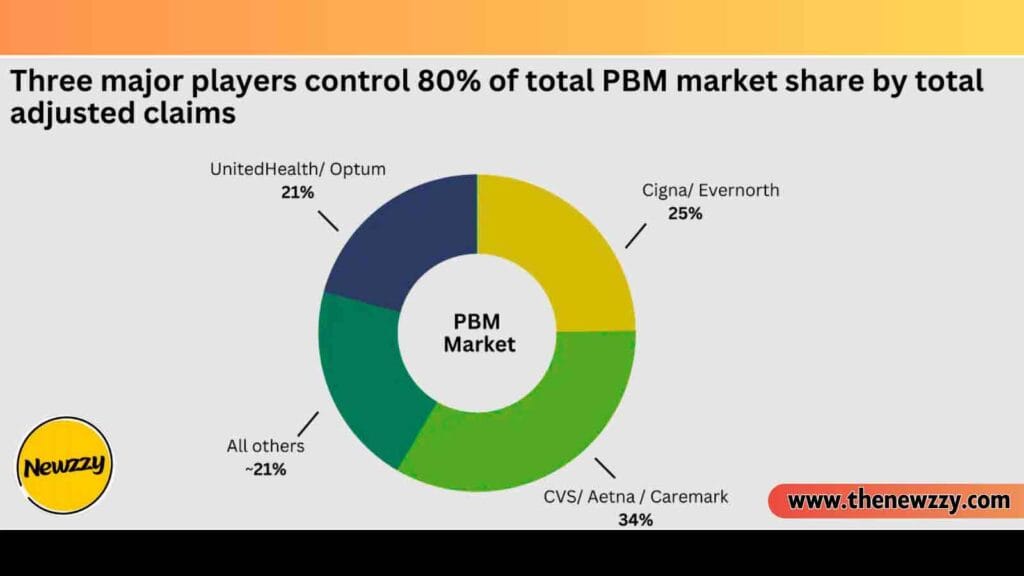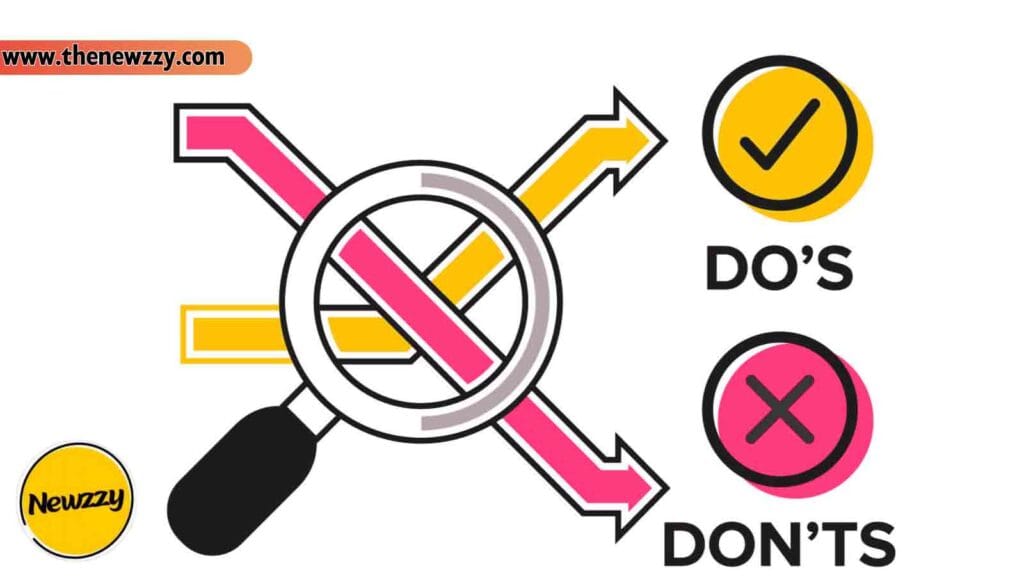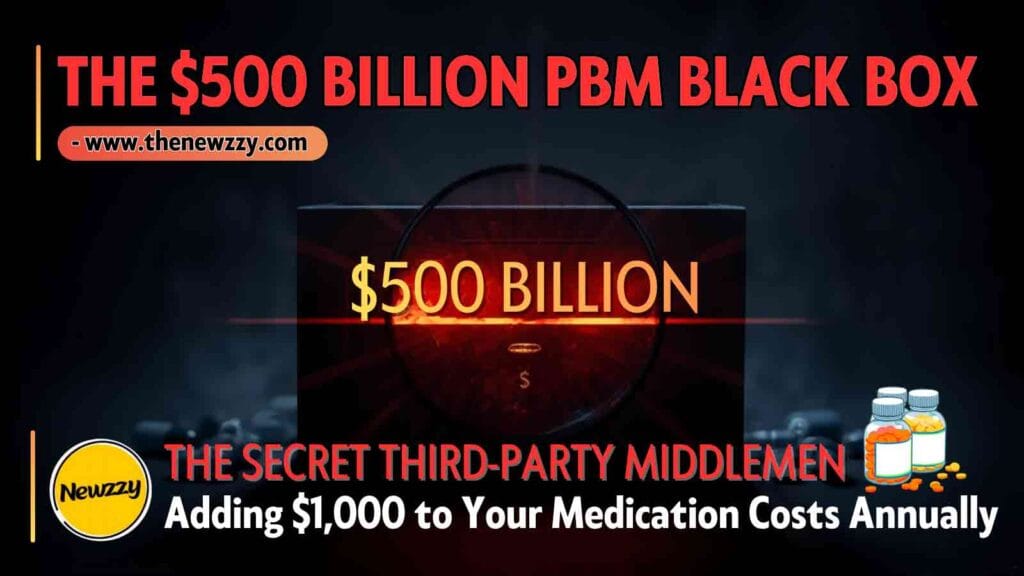Discover the hidden $500 billion PBM Industry. You did everything right. You used insurance, you went to a network drugstores and you paid 150 dollars when it is only supposed to be $50 on a drug.
You are at the counter of the pharmacy and feel lost, with a baffling piece of paper in your hand which starts with messages about insurance adjustments, discounts available in the manufacturing country and ends with unintelligible codes. Instead, you experience frustration, who should you blame? Is it your pharmacist? Your doctor? The pricing drug company?
Also Read: The Invisible Money Effect: How Frictionless Payments Are Quietly Reshaping Your Spending in 2025
The fact is, the criminal is not one of the above, at least, not in a literal meaning. It is a multi-billion-and-you-never-heard-of middleman, your Pharmacy Benefit Manager, or PBM.
PBMs have been quietly working in the background to construct a complicated, carefully obscured system that pushes the cost of medical care to an untenable plateau to all: the patients, employers, and even taxpayers. It is estimated that this unacknowledged industry costs more than a half-a-billion dollars a year which makes it one of the most influential, completely unknown, pertinent forces in American healthcare.
This is how the PBM Black Box does it, why the system was designed to baffle you, and, most importantly, why you come up paying. At the end of this article, the key to this hidden economy and the appropriate measures one should take to shield his/her wallet and seek transparency will be uncovered in addition to you knowing it. We are lifting the veil of supply chain in the pharmaceutical industry to show the actual cost drivers.
Table of Contents
What Is a PBM?
You need to understand the structure of a system in order to de-structure it. The role of the PBM is something that seems easy, and, when referred to on the paper, advantageous. They show themselves as the master of the drug benefit who administers it on behalf of your employer or insurer.
The Traffic Cop Analogy
Consider PBMs to be the traffic cops of the prescription drug market, except that they collect fees on every car that they allow to pass, and they also receive a kickback to give a particular track the green light. They occur at the most important crossroads of the pharmaceutical supply chain: they are directly between the insurers (who have to pay the bills), the drug makers (who determine the list prices), and the pharmacies (who dispense the drug).
Their presence in the middle signifies that practically no prescription is sent to a patient in a manner other than delivering it through a PBM to have it approved and priced.
Their Stated Job vs. Their Real Power
Three major stated functions of PBMs are:
- The development of Formularies:They make and take care of the Formularies -which are the lists of covered drugs which specify which drugs your insurance will cover and at what level (e.g. generic, preferred brand, non-preferred brand). This places them with massive control of the type of drugs that millions of Americans consume.
- Bargaining- Rebates: They negotiate huge amounts of cash referred to as rebates with drug manufacturers. Provided in theory all these rebates are transferred to the health plan and eventually reduces premiums. This is, in fact, where the main points of conflict of interest to the system start.
- Claims Processing: They process the complicated real time transaction, when you submit your prescription to the pharmacist. They decide on what you will pay as copay and also what the plan will pay.
In order to visualize this flow of prescriptions and money, we will take into account the following simplified diagram:
Although this simplifies the relationship, this diagram clearly demonstrates the central and controlling role of the PBM. They possess all the leverage since they are the ones in control and the flow of money. They are the gatekeepers.
How PBMs Increases Your Medical Bill?

The issue is not the existence of the PBM, they are simply not transparent enough and their business model is skewed towards encouragement of perverse incentives. They do not realize a profit of reducing the total costs of healthcare, they manipulate the spread between their price to the health plan and the price to the pharmacy or the rebate they collect out of the manufacturer.
These mechanisms have been dubbed to be the secret tricks of the PBM.
Leverage 1: The Shell Game of Spread Pricing
This is possibly the most severe and easy to measure method through which PBMs make hidden profit.
Explanation: Spread pricing is where the PBM pays a significantly large price to the health plan (your employer or insurer) and they in turn charge the dispensing pharmacy even the same drug. The difference is the “spread” and it is pocketed by the PBM. It is an insidious charge applied to each transaction.
Suppose a certain generic drug. Your health plan can be billed by the PBM to pay it the price of the PBM which they have fixed at 100. However, when the drug is given out by the pharmacy, PBM only pays the pharmacy 60 dollars. The profit is the $40 which is the spread made by the PBM in real time and it is a secret. This 40 does not translate to reducing your premium or copay, it will only be nothing but profit to the middle man.
Though this does not necessarily directly affect your copay, it has a big cost raising effect on your health plan as a whole, which finally comes at as increased premiums to your employer, and increased out of pocket costs and deductibles to you. It swells up the system in a whole.
Artistic Testimonies to the Spread:
[PBM Profits 40] –> [Pharmacy 60].
Lever 2: The “Rebate Game” – How your Best Interest is Lost.
It is the most difficult and the strongest lever that PBMs can apply so it makes them revenue generating rather than cost managers.
Meaning: PBMs require enormous amounts of cash rebates by drug manufactures. The PBM in turn would make a promise to add the brand-name drug of the manufacturer into a higher area of the formulary so that it stands covered ahead of the other drugs.
This is where the fundamental collision of interests lies: this is motivating PBMs to prefer a high-list-price/high-rebate medication to a lower-cost and equally effective one.
Scenario A (Poor in PBM):A manufacturer has a new drug at a list price of $500 and a rebate of 50.
Scenario B (Good to PBM): A competitor is selling a drug at a list of 1000 at a 500 rebate.
Scenario B is often preferred by the PBM since the bigger the rebate the larger a direct, lucrative cash flow is to them (or is a bargaining weapon with the insurer). The problem? It generally takes the form of a percentage of the inflated list price of the drug, and then subtracts the rebate. You pay higher, the PBM receives a huge kickback, and the only loser is the patient since he or she is compelled to take the higher-priced drug and pay high copay depending on its exaggerated original price.
Rhetoric: This is comparable to the situation when a car dealer gives you a secret commission on selling you the 40,000 SUV over the 25,000 sedan, making it sound like a bargain when he is actually just making a special rebate. Still you pay percentage of the higher price of the SUV.
The profit-seeking of the PBM in this case has lost any connection whatsoever with the intended purpose of reducing healthcare expenses. They will enjoy increased list prices, not reduced ones.
Lever 3: “Gag Clauses” and “Pharmacy Directing
Direct effects of these mechanisms are to limit the information you have and the option you have in order to favor the bottom line of the PBM.
Gag Clauses: Not long ago PBM contracts contained gag clauses which held that no pharmacophag should inform you when the cash price of a drug is less than your insurance copay. As an example, you could be induced by a PBM to pay $20 out of pocket as a copayment on a generic drug when the pharmacist could sell it to you in cash for $10. The cash price was only reported to you by the pharmacist who would risk penalty or disqualification by the network of PBM. Although these clauses are now forbidden on the federal law, they are still prevalent historically, showing that the given PBM aims to dominate all the pricing data.
The Big Three Players

Pharmacy Directing (Vertical Integration): Express Scripts, CVS Caremark, and OptumRx are all vertically integrated, i.e. they have their own mail-order pharmacies and specialty pharmacies.
CVS Pharmacies are owned by CVS Caremark which is owned by CVS Health.
Express Scripts is a part of Cigna, which owns Accredo (a large speciality pharmacy).
UnitedHealth Group is a major owner of a huge provider network and in turn is the owner of OptumRx.
This arrangement enables the big three PBM to direct the prescriptions to its own mail-order pharmacies and closes independent and retail pharmacies. This is not competitive and enables them to take up the dispensing profit too, which further consolidates their power and minimizes competition which may bring the costs down. Once you are compelled to utilize their mail-order service, they dictate which drug to be used, the shipping, the prices and the profit.
The Numbers Don’t Lie: PBM Market Share

Discounted benefits and exaggerated expense are not mere speculation, rather they are proved by many governmental and autonomous studies. The statistics give a clear picture of an industry of such scale and operation mass and systematical. The power and cost of the PBM system are cold and hard factual information as shown below.
The above findings are based on the many sources that face the general audience. The Federal Trade Commission (FTC) investigations have concentrated on the merger of the big three. States Medicaid audits, as often collected together by the Congressional Budget Office (CBO) have estimated the amount in losses due to spread pricing. Most importantly, the high percentage of rebates retained by PBMs is verified by independent research by academic journals such as the JAMA Health Forum and those commissioned by employer coalitions, which are large employers.
How to Avoid PBM Schemes?

There is good news though; the greater the transparency and more patients, employers, and legislators open their eyes to the PBM Black Box, the greater the number of weaponry you now have to play the fight. You can take personal initiative to win more money on the next prescription. Your fury can be converted into action value by doing the following four things.
Action 1: “Ask This Question in the Pharmacy
This is the ultimate defense mechanism against PBM pricing schemes
Always say to your pharmacist: What is the cash price of this drug and is this less expensive than my insurance benefit?
Due to the removal of gag clauses, the pharmacist is now by legal duty)-> to provide you with this information. In case of a generic drug, it is unbelievable to see cash price lower than your copay. This way, paying in cash, you entirely circumvent the various price levels that the PBM has, saving you money in the process and sending a strong message that their rating is unreasonable.
Action 2: “Apply Price Comparison Tools
The number of companies that are committed to working outside the PBM system is increasing.
Recommended Tools: Use such services as GoodRx, CostPlus Drugs (company of Mark Cuban) or Blink health. These companies bargain prices with the manufacturers or the pharmacies and circumvent the overcharging of the PBM and his formulary cheating.
- GoodRx: It offers coupons that can sometimes have a lower price than your copay.
- CostPlus Drugs: It offers a prescript list of generic medications at cost plus a uniform mark up of 15 percent and a three-dollar dispensing charge.
- Blink Health: Operates in the same way to offer negotiated low prices.
Never forget to check the cost of your drug on one of these websites and then remit your copay. It may consume one minute, but may save you dozens, or even hundreds, of dollars.
Action 3: X. “Become a Squeaky Wheel”
The information given by the PBM formulary depends on your doctor. You may demand questioning the prescription.
Ask your doctor or pharmacist: Is this brand name drug expensive and does it have a generic or a therapeutic substitute that will be listed on my formulary?
PBMs can deliberately skip some generics in order to take advantage of a high-list-price brand and earn the highest rebate. By posing this question, you compel discussion of truly cost effective substitutes, other than rebel-effective substitutes. You may receive a generic substance that is a chemically identical substance yet it is 90 percent cheaper just because the PBM favors a different and more costly medication.
Action 4: “Request Openness on behalf of Your Employer/Insurer
The final battle is structural, and it begins with the individual that pays the bill: your employer or health plan.
In case you have been insured at work, contact your benefits manager or HR department. This is an important question they should be posed: Does our company operate utilizing pass-through PBM model, or a spread-pricing model?
Pass through model implies that the PBM must commit itself to all rebates and all pharmacy savings to the employer. This removes the PBM remotely gaining interest on the spread and retention of rebates which is more in line with the financial interest that the PBM has in the interest savings of the health plan.
This model is currently being adopted by many employers as a way of circumventing the obscurity of the Big Three. Inquiring, you give your employer an indication that this is hectic and they have no choice but to consider competing and transparent PBMs or seek an improved deal with the existing one.
The PBM business is successful due to confusion and complexity. You are no longer a passive participant having an understanding of the Shell Game of the Spread Pricing and the Rebate Game. You are a knowledgeable consumer who has the resources to request transparency and rationally spend on healthcare. The tax burden of your health weighing hidden at $500 billion is only hidden provided you are ignorant about where it can be found. Now you do.
Frequently Asked Questions (FAQs)
How do I find out who my PBM is?
Look at the back of your insurance card—there’s often a “Pharmacy” number and a logo (like CVS Caremark, Express Scripts). You can also call the member services number on your card and ask directly.
If PBMs are so bad, why do insurance companies use them?
Insurers argue PBMs save them money through negotiated rebates and manage complex pharmacy networks. However, the perverse incentives and lack of transparency mean these “savings” often don’t get passed down to you, the consumer, in the form of lower premiums or copays.
Are PBMs the ONLY reason drugs are expensive?
No. High drug prices are a complex problem with multiple players, including manufacturers setting high launch prices and a patent system that limits competition. However, PBMs are a major and often hidden part of the problem, adding layers of cost and complexity without adding therapeutic value.
Is anything being done to regulate PBMs?
Yes. There is growing bipartisan scrutiny at the state and federal levels. Several states have passed laws banning spread pricing in Medicaid, and there are ongoing efforts in Congress to increase transparency and ban certain practices like “gag clauses.”

